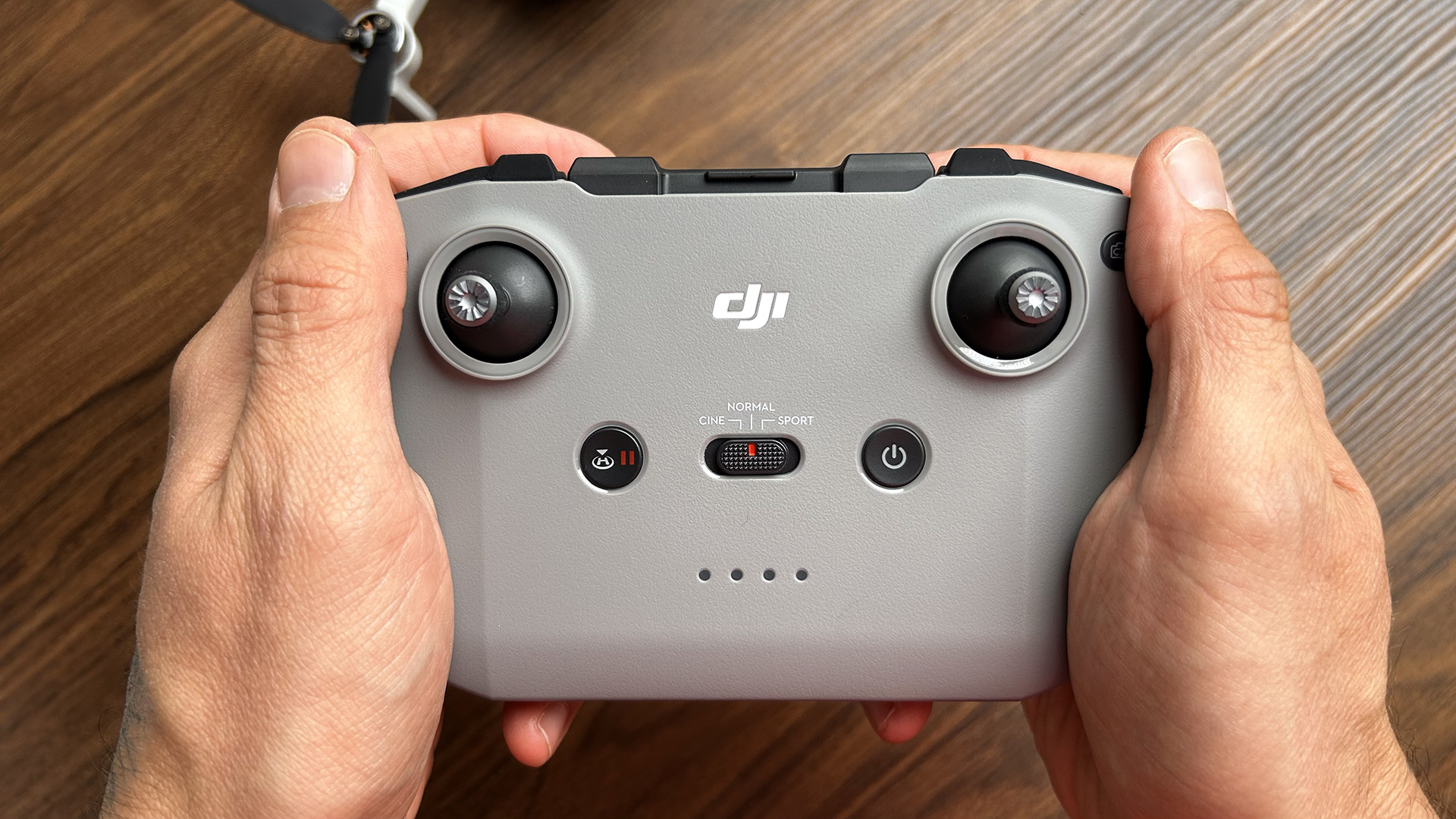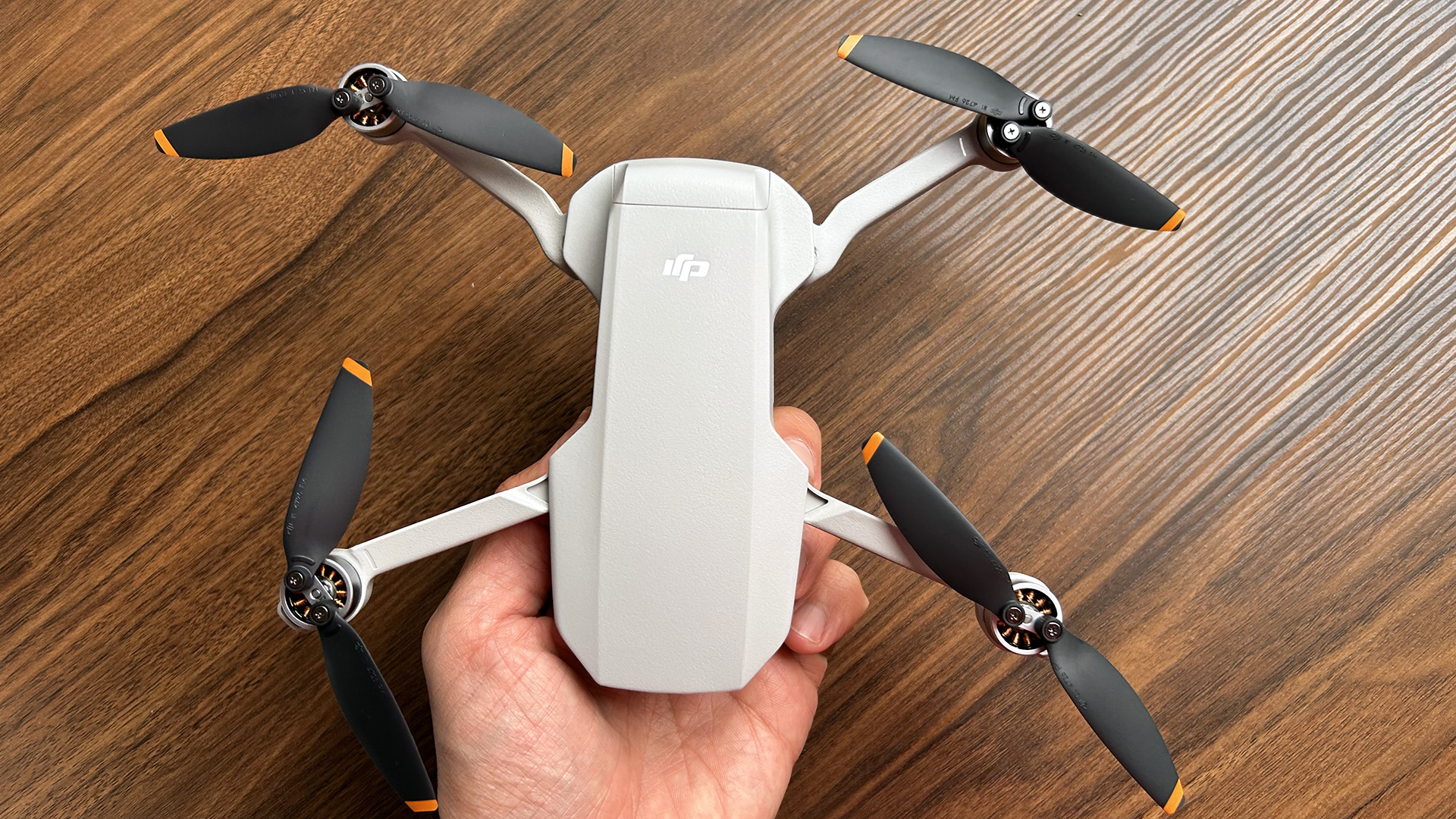DJI Mini 2 SE review: truly the most capable drone for beginners
You get almost all the features of the DJI Mini 2 but for a lot less – I'm sold


Beginner drone pilots, you need the DJI Mini 2 SE. The feature set and performance of this dinky drone are beyond reproach at this price point. You miss out on some camera features compared to the Mini 2, but the DJI Mini 2 SE offers more than enough functionality for beginners.
-
+
Superb flight performance for such a lightweight drone
-
+
DJI RC-N1 Remote Controller is ergonomically designed and easy to operate
-
+
3-axis gimbal provides smooth video footage
-
+
Level 5 wind resistance
-
-
No 4K or True Vertical Shooting options
Why you can trust T3

DJI Mini 2 SE review TL;DR: superb sub-250g drone with an excellent gimbal and brilliant flight capabilities. The price is just right for the feature set (you only miss out on some camera functions compared to the Mini 2).
DJI is the best drone manufacturer; there is no doubt about it. The company's range of drones goes from the ludicrously overpowered DJI Inspire 3 to the subject of this review, the beginner-friendly DJI Mini 2 SE. In fact, the Mini 2 SE is the best drone for beginners, thanks to the easy-to-understand controls, accessible price point and decent camera performance.
And while in this DJI Mini 2 SE review, I'll focus on what makes this drone so user-friendly, this doesn't mean intermediate pilots on a budget should avoid it. From a flight performance point of view, the Mini 2 SE is almost identical to the DJI Mini 2, and it only falls a little bit short in video capabilities – a small price to pay for significant savings. Pun is very much intended.
DJI Mini 2 SE review: price and availability
The DJI Mini 2 SE is available to buy now from DJI UK, DJI US and DJI AU for a recommended retail price of £309/$339/AU$599. This is the price of the standard version, which includes the Mini 2 SE drone, the RC-N1 Remote Controller, one battery, spare propellers/screws, screwdrivers, cables and a gimbal protector cover.
The DJI Mini 2 SE Fly More Combo is more expensive (£439/$489/AU$799); it's actually more costly than the standard version of the DJI Mini 2. It adds another battery, a two-way charging hub, a shoulder bag, a propeller holder and more. Both versions are available at select third-party retailers, such as Drone Safe Store.

DJI Mini 2 SE review: what's new?
The DJI Mini 2 SE offers quite a few improvements over its predecessor. It can ascend (5 m/s vs 4 m/s), descend (3.5 m/s vs 3 m/s), and fly faster (16 m/s vs 13 m/s) than the Mini SE. Max takeoff altitude has also been increased to 4,000m from 3,000m, and flight time has been improved by one minute (31 vs 30 minutes).
A new addition is the RC-N1 Remote Controller (pictured above). This is an updated version of the remote controller that was included with the original Mini SE. It's more ergonomic with an improved button layout – it certainly felt easier to hold and operate with my huge monkey hands.
Get all the latest news, reviews, deals and buying guides on gorgeous tech, home and active products from the T3 experts
The DJI Mini 2 SE added a new global satellite system (it uses GPS, GLONASS and Galileo). Most importantly, the DJI Mini Se 2 can now shoot in RAW (DNG), which wasn't an option with the Mini SE.

DJI Mini 2 SE review: design
From a physical point of view, the DJI Mini 2 SE is almost identical to both the Mini SE and the Mini 2. It's a hair heavier than those two at 246g (including the battery, propellers, and a microSD card). The DJI Mini 2 SE is light enough to fly in the UK without a Flyer ID (you still need the Operator ID, though).
Dimensions of all three versions are the same (L245×W289×H56 mm when unfolded). When folded, the DJI Mini 2 SE can fit in your palm (folded dimensions L138×W81×H58 mm) – it definitely fits in mine.

The DJI Mini 2 SE's battery capacity and size are also the same as those (2,250 mAh, 82.5g). The body is made of hard plastic to protect the drone's internals from occasional bumps but is light enough not to weigh it down. I'm not sure why all drones need to stay light grey, as it makes them impossible to spot in the sky, but what do I know? I like my gadgets to be colourful with a lot of personality; that's all.
The USB-C charging port and the memory card slot are exposed at the rear, and this is also where you can remove the battery. At the bottom, you'll find the on/off switch and the Downward Vision System sensors that help the SJI Mini 2 SE decide if it's safe to land or not (you can force land the drone; more on this below).

DJI Mini 2 SE review: flight performance
I was super impressed with the flying capabilities of the DJI Mini 2 SE. Not only the drone has the same flying prowess as its more expensive sibling, the Mini 2, but it also has Level 5 wind resistance (up to 10.7 m/s or 38 km/h) and ±0.1 m vertical and ±0.3 m horizontal hovering accuracy (with vision positioning). This, combined with the superb gimbal performance, ensures that the DJI Mini 2 SE stays where you left it in the air.
There are three flying modes: Normal, Sport and Cine. You'll need to set the drone in Sport mode to reach maximum ascend, descend and flight speeds, whereas, in Cine mode, flight speed is limited for more stable video capturing. I'd recommend using Cine mode for absolute beginners, at least until you get used to controlling the DJI Mini 2 SE.
The drone also has a few different return-to-home (RTH) modes. Smart RTH uses GPS to find its way back to the controller, while Low Battery RTH is triggered when the battery is depleted to the point that might risk the return of the DJI Mini 2 SE if not performed immediately. There is also a Failsafe RTH option that backtracks the drone's flight path if it loses connection to the controller (up to 50 metres).
To make beginner pilots' life easier, the drone has Auto Takeoff and Auto Landing functions. These can be initiated via the DJI Fly app. For landing, the drone uses its Downward Vision System to determine if it's safe for the Mini 2 SE to descend; however, you can force land the drone by pressing the left joystick down. I don't recommend this to beginner drone pilots, but I thought I'd mention it in case someone starts panicking that they can't land the aircraft.
A post shared by Matt Kollat (@pace_max_pro)
A photo posted by on
DJI Mini 2 SE review: camera performance
Despite the cheaper price, the DJI Mini 2 SE inherited many of the Quickshot modes of the Mini 2, including Helix (the drone ascends around an object in a spiral fashion), Circle (spiralling movement at a set altitude) and Boomerang (the Mini 2 SE ascends and then descends along an elongated oblong circle route). You can also shoot Sphere, Wide Angle, and 180° panoramas using the aircraft.
Interestingly, the Mini 2 SE uses the same 12 MP 1/2.3-inch CMOS sensor as the Mini 2, the latter of which can shoot videos in 4K, whereas the Mini 2 Se can only shoot 2.7K footage up to 30 fps. Sadly, the DJI Mini 2 SE hasn't got a True Vertical Shooting option either – as found on the DJI Mini 3 Pro – so you'll need to crop the videos if you prefer to post vids on Instagram/TikTok.
Drone photographers will be delighted to hear that the Mini 2 SE can shoot photos in RAW, allowing you to edit your pictures in more detail using software such as Adobe Lightroom and the like. RAW capability is the main reason I recommend the DJI Mini 2 SE, not just for beginners but also avid photographers; under the correct light conditions, you can shoot pretty decent photos with the drone.

DJI Mini 2 SE review: verdict
The DJI Mini 2 SE is a superb drone for beginners. It offers plenty of user-friendly features, such as Quickshots video modes, Auto Takeoff and Landing, different return-to-home modes and more. Better still, it can also help you progress towards more professional-grade drones by allowing you to shoot photos in RAW format and fly the aircraft in different modes (slow, normal and fast).
There are a couple of small trade-offs, such as the lack of 4K video resolution and no True Vertical Shooting options, but at this price point, it's hard to be mad at the DJI Mini 2 SE. You get what you pay for and then some. Beginner drone pilots and aerial photographers on a budget – don't miss this!
DJI Mini 2 SE review: also consider
Underwhelming camera performance aside, the Potensic Atom SE is a very decent beginner drone. It's not massively more affordable than the DJI Mini 2 SE but offers more flying modes and some extra features, potentially making it more appealing to those who prioritise the flying experience over camera footage. Read my full Potensic Atom SE review.
The pocket-sized Autel Evo Nano is equipped with a 1/2-inch camera for ravishing 4K footage and 48-megapixel stills, plus three-way obstacle avoidance for added in-flight safety. It's the first non-DJI camera drone to win T3's full five-star accolade. And deservedly so. Read Derek's full Autel Evo Nano review.

Matt Kollat is a journalist and content creator who works for T3.com and its magazine counterpart as an Active Editor. His areas of expertise include wearables, drones, fitness equipment, nutrition and outdoor gear. He joined T3 in 2019. His byline appears in several publications, including Techradar and Fit&Well, and more. Matt also collaborated with other content creators (e.g. Garage Gym Reviews) and judged many awards, such as the European Specialist Sports Nutrition Alliance's ESSNawards. When he isn't working out, running or cycling, you'll find him roaming the countryside and trying out new podcasting and content creation equipment.